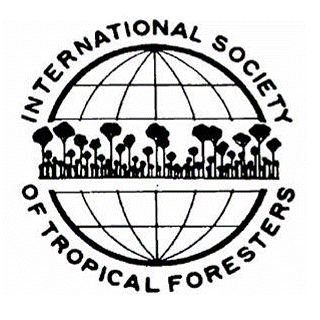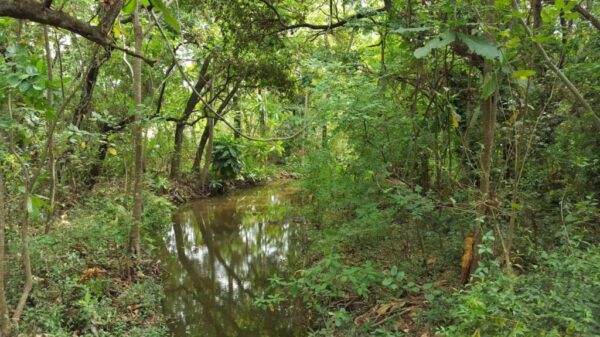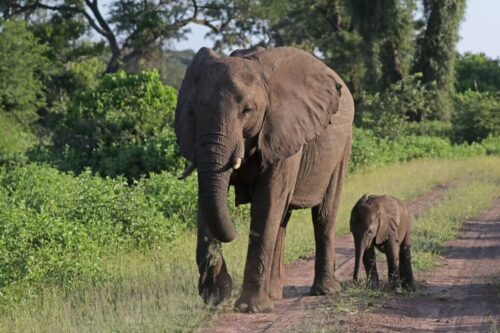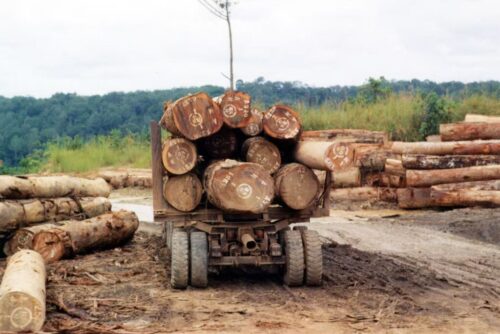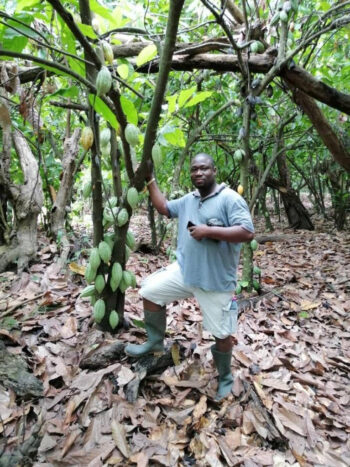African tropical rainforests are a vital cornerstone of the Earth’s ecosystem. As one of the planet’s most unique natural habitats, they play a crucial role in regulating the global climate by absorbing vast amounts of carbon dioxide. These rainforests are also home to an incredibly diverse range of plant and animal species, making them irreplaceable for maintaining global biodiversity. Their survival is not only essential for local ecosystems but also has far-reaching implications for the entire planet.
1.Distribution and Characteristics
African tropical rainforests are primarily found in two key regions. The largest expanse covers the Congo Basin, spanning countries like the Democratic Republic of Congo, and accounting for about 60% of Africa’s total rainforest area. The other significant cluster lines the Gulf of Guinea in West Africa, including countries such as Ghana and Côte d’Ivoire.
Under an equatorial climate, these rainforests experience consistent warmth, with average temperatures around 27°C, high humidity, and annual rainfall ranging from 1,500 to 3,000 millimeters. This climate fosters a diverse range of ecosystems. Lowland rainforests in the Congo Basin are the most extensive and biodiverse, while mountain cloud forests at higher elevations host unique species and epiphytic plants. Seasonal dry forests, with trees adapting to arid periods, also contribute to the region’s ecological richness.
2.Biodiversity
The African tropical rainforests stand as a treasure trove of biodiversity, where lush plants and diverse animals coexist, and complex biological interactions maintain the operation of the ecosystem. In terms of plant resources, African rosewood is highly prized for its beautiful grain and excellent durability, making it an ideal material for high-end furniture and musical instruments. African sandalwood, with its unique fragrance, yields essential oils that are highly valuable in the global market. Thousands of orchid species are a remarkable highlight. Some orchids attract male pollinators by mimicking the appearance and scent of female insects, ensuring their reproduction. These plants not only adorn the rainforest but also help form the ecological foundation. They provide food and habitats for animals, participate in the water cycle through transpiration, store carbon, and enrich the soil as fallen leaves decompose, nurturing new plant growth.
The animal resources are equally astonishing. As the largest primates on Earth, lowland gorillas live in social groups, foraging and communicating with each other in unique ways, and their activities influence the vegetation structure. The okapi, with its distinctive appearance, is a master of camouflage and plays a crucial role in seed dispersal while feeding. Colorful parrots flit through the trees, and crowned eagles, with their sharp eyesight and powerful talons, prey on small mammals and birds, maintaining population balance. Jackson’s chameleons, with their color-changing ability, the giant African rock pythons, the iridescent African blue morpho butterflies, and the well-organized army ants all play key roles in the ecosystem.
The intricate interactions among organisms shape the rainforest’s ecology. Predator-prey relationships, such as those between crowned eagles and monkeys, regulate population sizes, with monkeys adopting group living and vigilant behaviors to evade predation. The symbiotic relationship between ants and acacia trees is a classic example: ants protect the trees from harm, and in return, the trees provide food and shelter for the ants. Competition for resources, whether sunlight for plants or food for animals, drives species to adapt and specialize, occupying unique ecological niches and ensuring the stability and sustainability of the rainforest ecosystem.
3.Social and Economic Value
For generations, indigenous communities in Africa have lived in harmony with the rainforest, relying on it for their survival. The forest provides a bountiful supply of food, from wild fruits and nuts to game animals. The BaAka people of the Congo Basin, for example, have a deep knowledge of the forest’s edible plants and use traditional hunting techniques to catch small game. Medicinal plants are also gathered from the forest, with traditional healers using them to treat a wide range of ailments. The bark of the cinchona tree, found in some African rainforests, has been used for centuries to treat malaria – like symptoms.
The rainforest is not just a source of material goods; it is deeply intertwined with local cultures. Many indigenous tribes have spiritual beliefs and rituals centered around the forest, viewing it as a sacred place. The Baka people of Cameroon believe that the forest is inhabited by spirits, and they perform ceremonies to honor these spirits and ensure a good harvest and protection from harm. Their traditional knowledge of sustainable resource use, passed down through the ages, offers valuable lessons for modern conservation efforts.
The economic value of African rainforests is substantial. Ecotourism has emerged as a major draw, with tourists from around the world flocking to witness the region’s natural wonders. In Rwanda, the mountain gorilla trekking tourism industry generates millions of dollars each year, providing employment opportunities for local communities in the form of guides, porters, and hospitality staff.
Sustainable harvesting of wood and non-wood forest products, such as rubber, palm oil, and honey, also provides a livelihood for many. For example, in Ghana, the cocoa industry, which relies on the shade provided by the rainforest trees, is a significant contributor to the country’s economy. When managed properly, these activities can contribute to local and national economic development while ensuring the long-term health of the forest.
4.Threats
African tropical rainforests face multiple existential threats. Deforestation, driven by agricultural expansion for crops like palm oil and soybeans, as well as cattle ranching, is rampant. Infrastructure projects, such as the construction of the Trans-African Highway, further fragment habitats, opening previously inaccessible areas to exploitation. In the past decade, forest-to-agriculture conversion in Africa has increased by 30%, leading to severe biodiversity loss, soil erosion, and heightened flood risks.
Climate change exacerbates these issues. Rising temperatures and disrupted rainfall patterns trigger longer droughts, increasing the risk of wildfires, which have become 50% more frequent in some areas. Extreme weather events damage the forest, and invasive species encroach as the climate shifts, disrupting the delicate ecosystem balance.
Illegal logging and wildlife trade also take a heavy toll. Valuable timber species like rosewood are illicitly harvested, often using heavy machinery that causes irreversible damage. Poaching has devastated African elephant populations, reducing them by 62% in the last decade, and endangers other iconic species, severely disrupting the food chain and ecological processes.
5.Actions and Achievements
Across Africa, a concerted effort involving governments, local communities and conservation organizations is underway to safeguard tropical rainforests. Many African governments have implemented policies to establish and expand protected areas. For instance, countries like the Democratic Republic of Congo and Gabon have designated large swaths of their rainforests as national parks and nature reserves, legally safeguarding these ecosystems from unsustainable exploitation. Local communities are also at the forefront of conservation. Empowered by various initiatives, they actively participate in sustainable forest management. In some regions, communities have developed eco-friendly practices for harvesting non-wood forest products, ensuring the long-term viability of the forest while generating income.
Conservation organizations play a crucial role as well. For example,ISTF seeks to maintain and enhance the tropical and subtropical forests of our planet.Through building a communication network,ISTF promotes communication between the field practitioner and researchers and policy makers, embracing the interdisciplinary diversity of tropical forestry.
Information sources
https://www.worldwildlife.org/places/congo-basin
https://www.fao.org/forest-resources-assessment/en/
https://cites.org/enghttps://janegoodall.org/
https://ich.unesco.org/en/homehttps://eia-international.org/forests/
